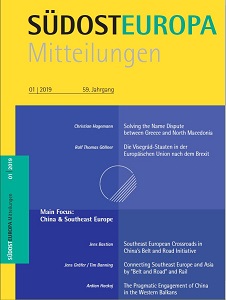Connecting Southeast Europe and Asia by “Belt and Road” and Rail
Connecting Southeast Europe and Asia by “Belt and Road” and Rail
Author(s): Jens Gräfer, Tim BanningSubject(s): Economy, Geopolitics
Published by: Südosteuropa Gesellschaft e.V.
Keywords: BRI; Southeast Europe; Asia; railway; economy;
Summary/Abstract: Railway lines are a key component in China’s “Belt and Road Initiative” (BRI), which seeks to build a network of connecting infrastructure spanning the Eurasian landmass. In trans-Eurasian railway transport, the traditional Northern Route via Russia and the Southern Route via Kazakhstan and Russia currently carry the bulk of goods exchanged between European and Chinese markets. They are expected to continue doing so in the future. However, countries in Southeast Europe can still profit from BRI-driven developments in railway transport through two alternative corridors that connect China with Southeast Europe: the Trans- Caspian Corridor and the China-Europe Land-Sea Express Route. These two emerging corridors are changing the infrastructure landscape in Southeast Europe and could yield economic benefits for the countries they traverse by removing transport bottlenecks and enhancing trade. The article highlights key infrastructure projects along the Trans-Caspian Corridor and the Balkan Silk Route and gauges their effects on international railway transport and on local economies. It also discusses the political implications of BRI-related projects in Southeast Europe.
Journal: Südosteuropa Mitteilungen
- Issue Year: 2019
- Issue No: 01
- Page Range: 52-65
- Page Count: 14
- Language: English
- Content File-PDF

